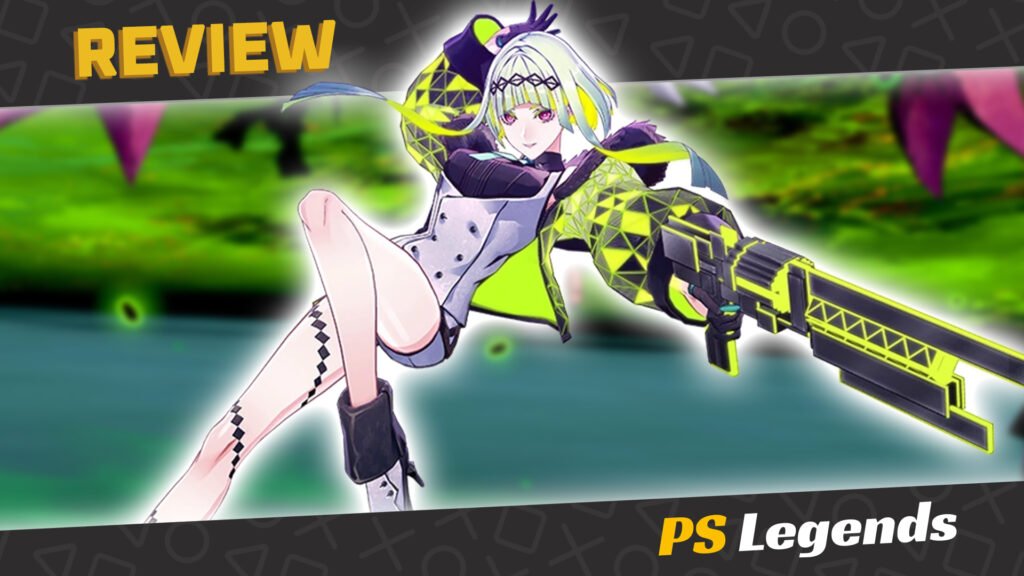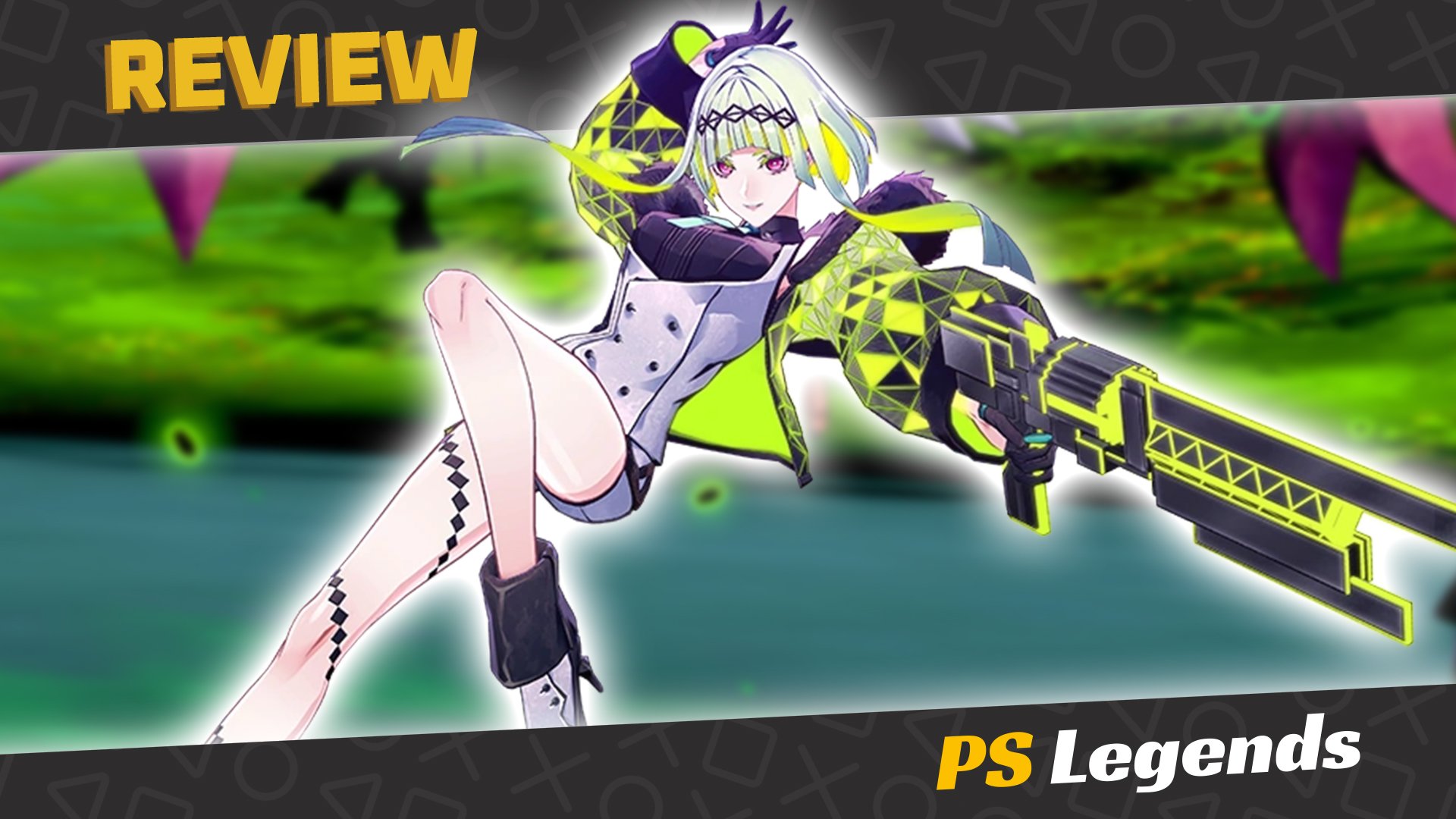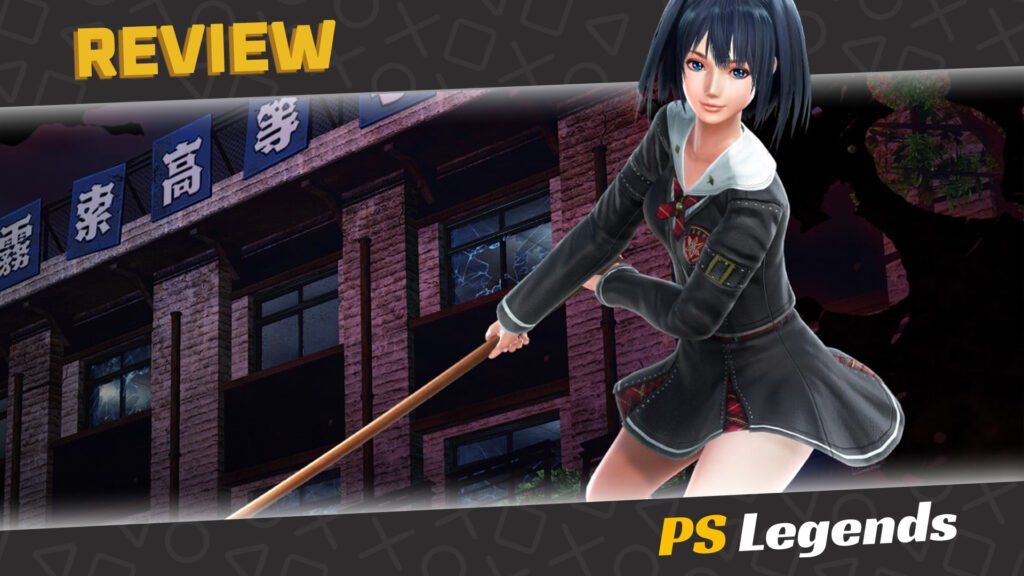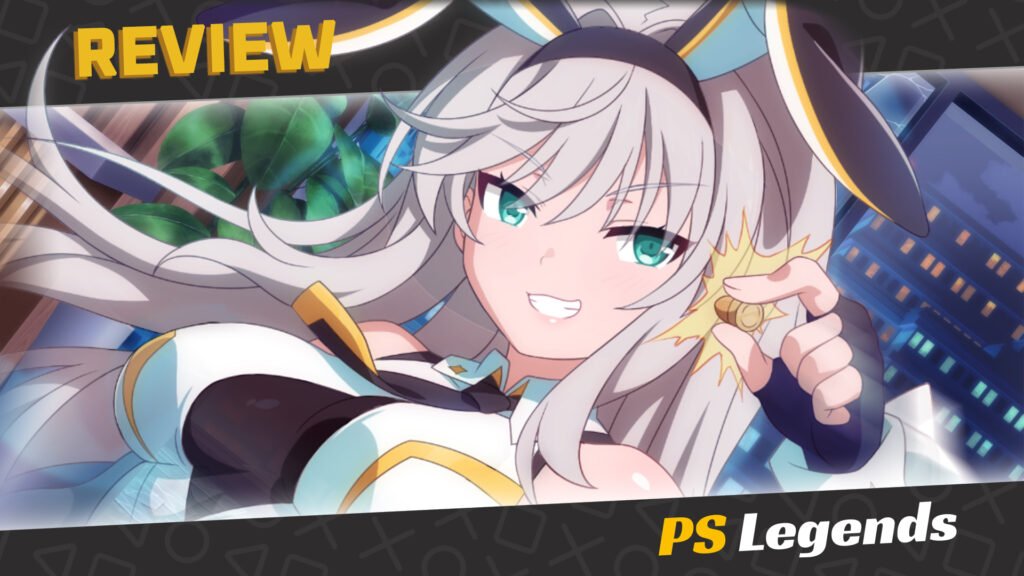2022 was a year of last chances for me with quite a few JRPG series since so many are slipping away from what’s tried and tested to break the norm while dividing their fan bases or sticking with the opposite and failing to elevate a struggling franchise out of generous mediocrity. As such, I’ve had to say a not-so-fond farewell to many a franchise after many disappointments, including some heavier hitters. The actual number of individual games making their way to the early ‘trade-in pile’ is becoming an unfortunate amount.
Soul Hackers 2 marks my final attempt to reacquaint myself with the Shin Megami Tensei series after the unwelcoming and punishing mess that was Shin Megami Tensei III: Nocturne (and its remaster) and the certainly better yet still slow and overstretched Persona 5. I know they can’t all live up to the excellence of the Digital Devil Saga games (I’m still hoping for a remaster of those), but please don’t let me down Soul Hackers 2. I don’t ask for much.
On This Page
Introduction
Soul Hackers 2 is a 2022 JRPG developed by Atlus. It was published by Atlus in Japan and by Sega worldwide for PS4 and PS5. The game is actually the fifth instalment in the Devil Summoner series, itself a part of the larger Megami Tensei franchise, mirroring many events from the Shin Megami Tensei universe, and a sequel to Devil Summoner: Soul Hackers (1997).
Soul Hackers 2 was developed by a team incorporating several veteran staff members including Eiji Ishida and Mitsuru Hirata, who worked as co-producers and co-directors, and scenario writer Makoto Miyauchi. The team collaborated with artist Shirow Miwa on character designs, and composers from the studio Monaca led by Keiichi Okabe to create the soundtrack.
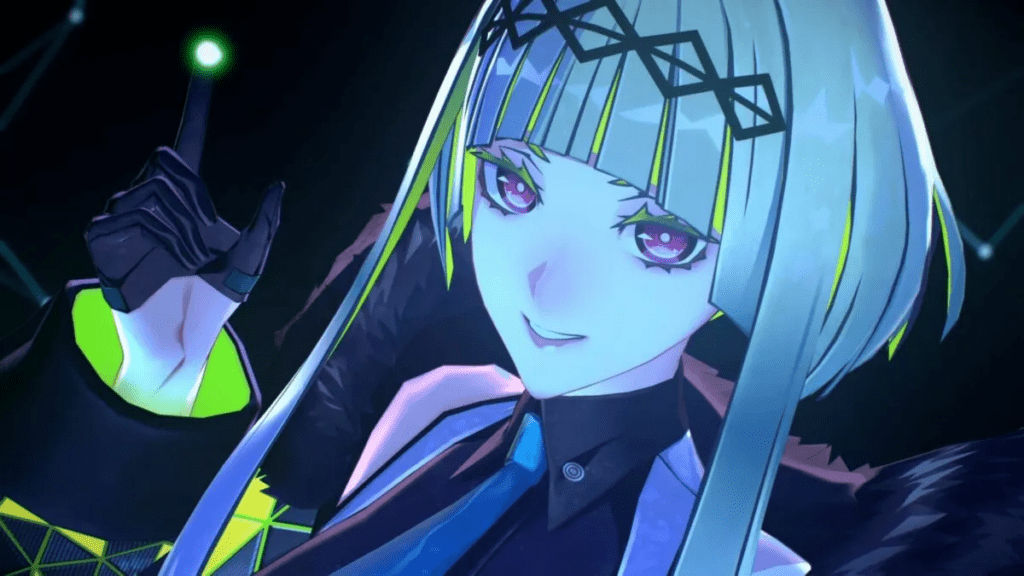
Story
Soul Hackers 2 is set in the in the not-too-distant future, in a city where humans and demons coexist in secret communities, with some humans able to form pacts with demons to become Devil Summoners. The Devil Summoners are mostly split between two main factions, Yatagarasu and the Phantom Society, who hold clashing ideological views on humanity’s progress.
We start off needing something of an open mind, as our world’s ever-growing stream of self-evolving cyberspace data, or ‘Aion’ as it prefers to be called, predicts the likelihood of a world-ending catastrophe brought by a certain celestial being known as the Great One. To prevent this, Aion creates a pair of semi-organic lifeforms, two girls named Ringo (our protagonist) and Figue (her support). While Figue prefers to avoid combat and stick with intelligence gathering and reconnaissance, Ringo isn’t afraid to get her hands dirty to fulfil her mission.
Ringo has the ability to reanimate the dead by ‘hacking’ their souls in order gain allies to aid her in stopping the upcoming apocalypse which is triggered by a handful of Devil Summoners who are violently hunting down the five keys, or ‘covenants’, required to summon the deity. Assisting Ringo are three previously deceased key players from the Devil Summoner community: Arrow, a Yatagarasu agent, Milady, a high-ranking Phantom Society summoner, and Saizo, a charming freelance summoner with a flair for investigation.

Gameplay
Despite the game being set largely in a single city, there’s an impressive assortment of non-dungeon ‘town’ environments to visit which help build the neon jungle atmosphere. Whilst it would be nice if the theme of demon summoners walking around in plain sight was explored with more mystery and possibly even a touch of light horror, it’s still an inviting world to explore, with a familiar splash of near-future cyberpunk.
Within a couple of hours, I already had my full party of characters. The recruitable roster of demons you can collect serves more as weapons or items since your human party members ‘equip’ them to use their skills, much like learning skills from items in Final Fantasy IX. This also encouraged me to mix up my demons from time to time so I could diversify my move-set without having to rethink my party members, unlike in Nocturne.
It’s a game that’s surprisingly easy to pick up and play, without too much micromanagement required from the player. Even the lengthy dungeons (which are very much a staple of the franchise) feature warp points allowing you to jump to previous areas without the need for hours of backtracking. It’s little fixes like these that the series so desperately needs. It doesn’t really fix the issue of the dungeons simply being too long in the first place, and their labyrinthine layouts requiring increasing amounts of trial and error to progress.
There’s a very welcome simplicity that glues the game’s components together and this is only highlighted more so in the fantastically flowing combat, where landing elemental attacks on enemies’ weaknesses grants bonus attacks, ‘Sabbaths’, from your demon companions, which grant extra combo damage without the need for skill-grinding or fiddly button combinations.
The story is communicated through a combination of fully 3D in-engine cutscenes, and dialogue sections combining in-game 3D models with 2D character portraits. Progression is tied to story-based quests, with the player moving between safe-zones holding associated services for supporting the player party such as item and equipment shops, and explorable dungeon environments featuring combat encounters with Demons.
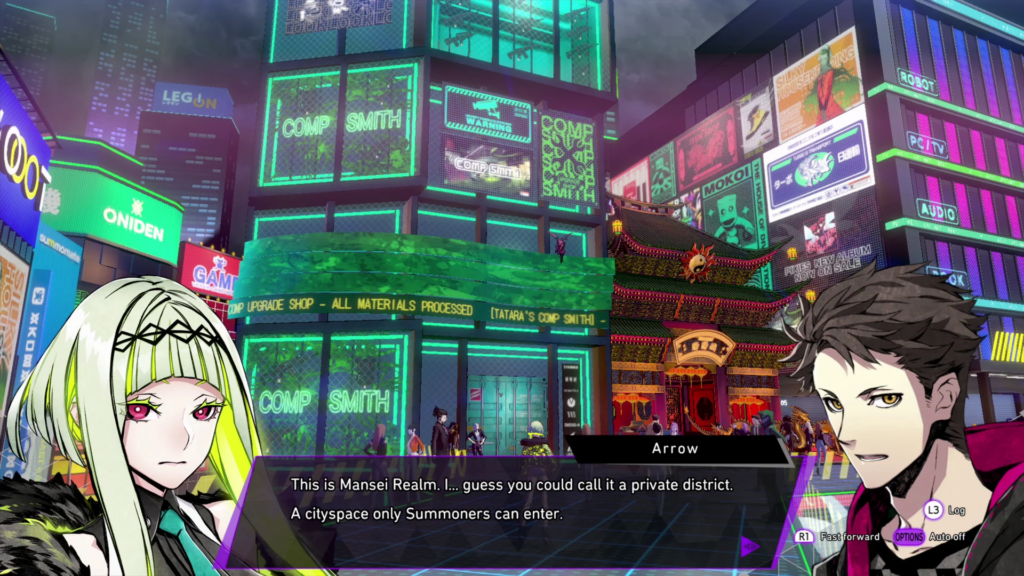
‘Requests’, the game’s form of side-quests, can be completed to earn in-game money and items. Alongside standard dungeons is the Soul Matrix, dungeons tied to members of Ringo’s party which can be explored and cleared to gain additional skills for the party. The scale of a party member’s Soul Matrix is determined by their Soul Bond, which can be strengthened by spending time with them outside combat or making specific dialogue choices in story cutscenes.
Enemies in dungeons are represented by vague 3D shadows, with their colour determining the enemy’s strength and aggression. Ringo can stun them to avoid combat or engage them. If the enemy hits the party first, they get the first attack in combat, while Ringo initiating the attack gives the party the first attack advantage and can trigger a free opening attack from a party member. Battles are turn-based, with each side getting a set of actions, using both standard attacks and skills assigned to their ‘COMP’ weapons via Demons. A core element of combat is exploiting weaknesses, which deal significantly more damage.
Striking an enemy’s weakness adds points to a Stack, and at the end of that turn the accumulated Stack is spent in a Sabbath, a powerful multi-Demon attack that increases in strength with higher Stack points. Some demons can learn and use Tamdem Skills, adding an additional effect to the Sabbath such as inflicting a status effect or recovering the party’s magic points. Another later element of combat is Commander Skills, an ability unique to Ringo that grants special buffs in battle.
As with other Megami Tensei titles, demons play a key role in combat, and can be recruited and customised by the player. Upon entering a dungeon, Ringo sends out some of her assigned demons to explore the dungeon environment, with finding them granting new information, items, healing, and potential new demons. Demons will join the party after fulfilling their request such as giving an item. A demon can then be equipped to a ‘COMP’ weapon, changing each party member’s accessible skills. Alongside recruitment, new demons can be accessed through Fusion, where two demons are fused into a new Demon type at a specific in-game location.
Players can select which skills are carried over from each fused demon into the new creation. While any two demons can be fused, fusing two specific ones triggers a Special Fusion, creating a more powerful Demon. Once a Demon has acquired all skills, it gifts the party with a ‘Mistique’, an equippable item which grants passive bonuses. Demons can be logged in a Demon Compendium, allowing them to be summoned again later on.
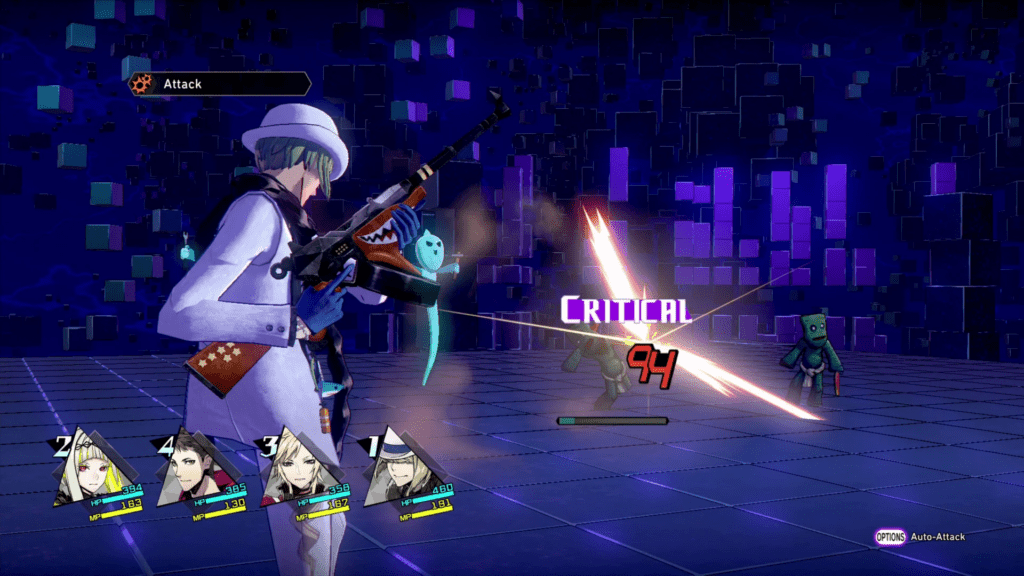
Graphics/Sound
Visually, the game utilizes the franchise’s usual smooth 3D cel-shaded character models in combat, in dungeons, and even in most cutscenes, while minor cutscenes keep the standard character models in the background and rely on generic text boxes accompanied by 2D character portraits. Town locations, like the characters, are highlighted with vibrant neon glows, bringing a lively yet gaudy futuristic ambiance to the world, while the dungeons feature very limited lighting, urging the player to rely on their map to find their way through the intimidating darkness.
The music for Soul Hackers 2 was handled by music studio Monaca, whose collaborative fusion of thrash rock, techno, and electronica form an iconic, memorable soundtrack that is both incredibly catchy and anarchic in its design, perfectly suiting the theme of clashing ideals and the meeting of technology and magic. The English voice acting is also exceptionally good, particularly Ringo herself.
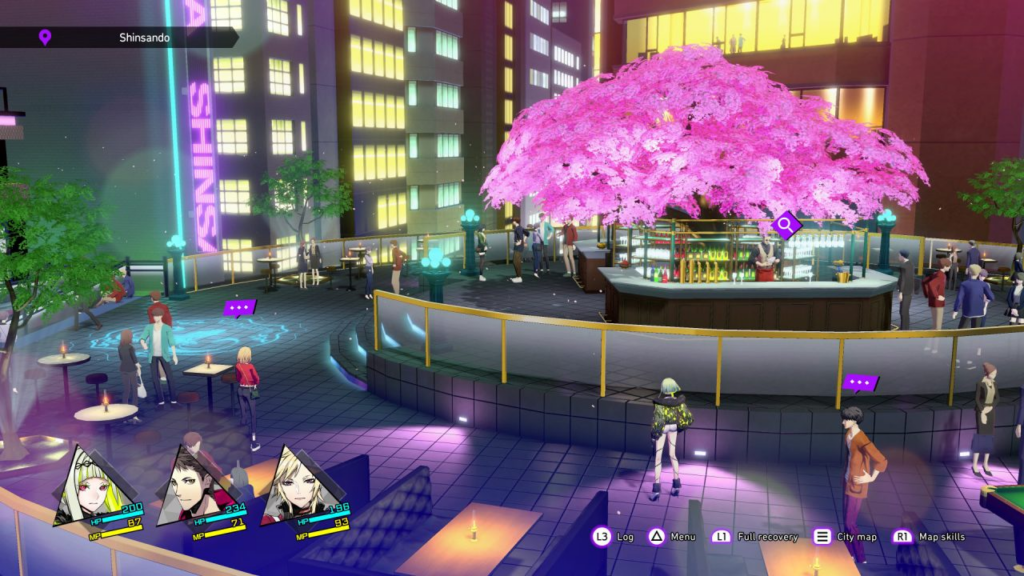
Replayability/Trophies
Finishing the story won’t be enough if you want the platinum since you’ll have to complete an additional 85 side quests, beat the final boss on ‘hard’ difficulty, buy a hefty number of items and upgrades, plus finish all five floors of each of your supporting party member’s personal dungeons. It can get pretty time-consuming, so the booster item/day one pre-order DLC is an absolute godsend that massively boosts your cash and EXP accrued and helps reduce a significant grind, at least for a while.
New Game Plus carries over current Soul Bond level, unlocking further character scenes, alongside costumes and accessories unlocked during the first playthrough. Character levels, items, money, and unlocked demons are carried over optionally. It’s a shame that you can’t finish everything in a single playthrough since you won’t accumulate enough relationship points to open up every level of those personal bonus dungeons.
This is where the unwanted grind returns and stops what is overall a solid game from reaching top-tier greatness. As much as I enjoyed spending so much time staring at Ringo’s spectacular bottom, sluggishly wandering through those overlong dungeons a second time doesn’t sound quite as entertaining to me.

Conclusion
Grindy side-quests aside, the game isn’t without some other niggles, too, as your supporting party members are a mixed bag of tropes. You’ve got Arrow, who is your usual partially amnesiac pretty-boy type, which is usually reserved for the protagonist role. You’ve got the ghastly-looking yet surprisingly dapper and charming Saizo, and lastly the token bitch-queen Milady. They’re all tropey, flawed, awkward individuals, yet they do manage to contribute to the overall narrative as their motives and backstories intertwine.
Fortunately, we’ve got a non-silent protagonist for a change, and one with mountains of charm and personality, and dare I say it, rather easy on the eye. Ringo herself took me by surprise as I was expecting an android-like character devoid of emotion and relatability, yet she has a cheeky personality which when combined with her naiveté makes her more quirky and socially curious rather than terse and ignorant. There’s a confident intelligence in her words which is also helped by anime voice-actress Megan Harvey, who does a stellar job in the role.
Soul Hackers 2 handles pretty well, and more than earns a passing grade. It’s so easy to jump into and isn’t held back by the slow progression of other games in the Shin Megami Tensei universe, making it a great entry point for newcomers. SMT enthusiasts may find the shorter length and simplified mechanics a bit of a step back, but it’s still a solid JRPG that entertains throughout. There’s certainly enough substance here to push me to give Shin Megami Tensei another chance.
Joys
- Interesting near-future twist on the SMT formula
- Awesome soundtrack
- Ringo is a great leading lady
Cons
- Boring side-quests
- Grindy true-ending requirements and trophies
- Trope-riddled supporting cast
